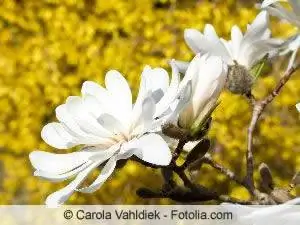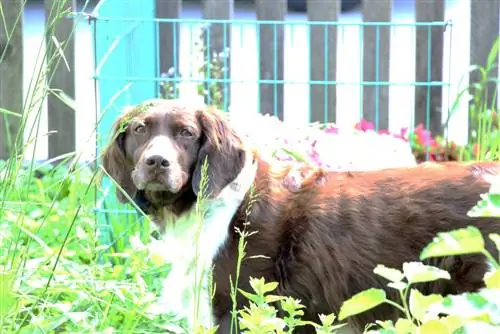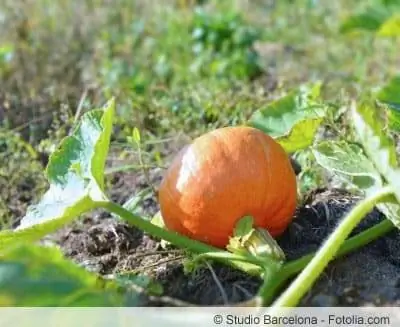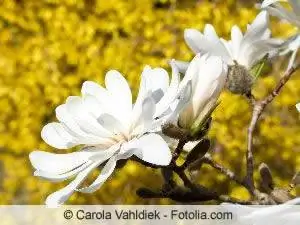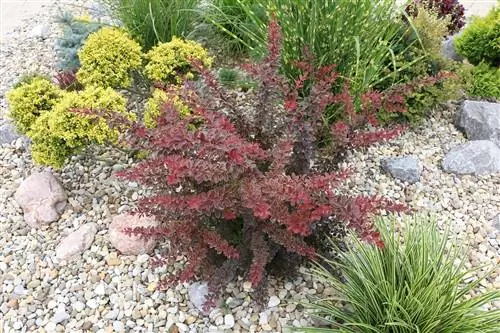- Author admin [email protected].
- Public 2023-12-17 03:39.
- Last modified 2025-06-01 06:48.
If you don't see the term "exotic plant" quite so narrowly, but are primarily looking for an exotic effect, there are some exotic plants that can grow and overwinter in the German garden. The exotic plants that look best in the garden are particularly popular, and you will get to know a whole range of them below:
What exactly is an exotic plant?
“Exotic”, from the word origin, comes from the Greek “exotiki” or the Latin “exoticus”. Both adjectives mean nothing more than foreign, foreign, foreign. In colloquial language, however, the meaning has been expanded; simply foreign, Austrian or French or Danish is not enough. Rather, only “particularly strange” things are exotic, things, creatures, and behaviors that are somehow perceived as extraordinary. Even the mere departure from the mainstream, even an unusual combination of everyday clothing, can quickly lead to a person being considered to have an exotic appearance. When it comes to fruits, plants and animals, people in “traditional old Europe” are a little more specific again; “classic exotics” are the fruits, plants and animals from the tropics that we rarely saw until recently. In the wake of globalization, however, this is changing significantly, and the plant trade has long since expanded the term “exotic plant” to include all Mediterranean plants for sales reasons, which is actually pretty good for the plants:
Exotic plants in Germany - they initially have a problem
If a plant appears more exotic to us, the further away its home is from us - the “most exotic plant” also has the most problems with us. Because the climate of their homeland automatically differs to the maximum from the climate in Germany. The climate in the world changes with the latitude at which a particular region of the world is located, and Germany is, so to speak, at its maximum north in terms of plants and their home regions, between the 47th (Bavaria) and the 55th (Schleswig-Holstein) latitude north. “Across” Germany in the direction of the North Pole are Scandinavia, Iceland, Greenland, all of which are not so exciting in terms of importing plants (what grows in Finland certainly also grows here, but is not considered an “exotic plant”). “Exotic plants” always come from regions that are further south than Germany, towards the equator, and their metabolism is therefore adjusted to completely different amounts and intensities of light than are available in Germany. A cactus like the bishop's cap (the cacti were among the first exotics brought to Europe by sailors in the 16th century) receives an average of 7.7 hours of sun per day in Mexico, in its home region around Chihuahua City, 28 degrees north latitude, in Germany just 4 hours.
In these areas closer to the equator (bromeliads, orchids, philodendrons, etc. come from regions that are even further towards the equator, latitude 0), the sun also shines with a completely different intensity: the global radiation, measured solar radiation in kWh per year, is from the 35th parallel north to the equator and then again south of it (South USA, Central and South America, Africa, Arabian Peninsula, India, Australia) at 2000 - 2500 kWh/m² per year all year round (at the equator the seasons are not so differentiated into warm and cold). In Germany it is a “ridiculous” 800 - 1200 kWh per year, in summer. If an exotic plant has to overwinter indoors, it will be “completely in the dark” behind a window pane without plant light, which for an evergreen plant means slow starvation. Even in winter there is still a lot of light outdoors, so it's not such a crazy idea to plant an exotic plant in the German garden. Just not every exotic plant:
Which exotic plants can actually survive in the German garden?
The closer a plant's origin is to the equator, the more heat the plant is used to. Winter temperatures below zero only occur in the temperate climate zone between 40 and 60 degrees north latitude (Germany is right in the middle of it); in the subtropical and tropical climate zones around the equator, plants do not experience sub-zero temperatures. That's why the exotic plants that can basically survive in Germany are more likely to be plants from exotic Spain than from exotic Congo; plants from the tropics usually have no resistance to a German winter.
The frost tolerance of the “Mediterranean exotics” is often astonishing; figs, camellias, laurel trees, palm trees, pines and cypresses grow in Ticino, which can sometimes be cold in winter. If one of these plants has ventured to the heights, which are not exactly rare there, it has certainly experienced a lot of cold. Plants grown there therefore also have good chances in Germany. There are also rare exceptions for plants from the subtropics/tropics that can survive German winters. In their homeland, they grow high in the mountains, where it can get really cold even at the equator, and are not freely exposed to sunlight, but rather as an understory of higher plants.
When purchasing, you should have an idea of where a plant originally grows. If you are given e.g. For example, if you offer a Brugmansia versicolor with the assurance that it is hardy in Germany, you can then ask how this plant from the tropical part of Ecuador is supposed to do that (it needs at least 12 degrees to overwinter and even outdoors in summer). protected location). Caution is also advised when it comes to yuccas, the Yucca 'Spanish Bayonet' is considered a winter-hardy garden yucca, but under this name Yucca aloifolia (up to -12 °C), Yucca treculeana (up to -15 °C), Yucca carnerosana (up to -20 °C) and Yucca glauca (up to -35 °C).
Popular exotic plants for the German garden
“Popular” means “everyone has it”, and what everyone has is boring? Some people see it that way, but they don't need to worry about exotic plants - at the moment they are much more likely to find native plants if they are looking for something that not everyone has. When it comes to exotic plants, it is definitely not a disadvantage to choose the most popular among them. Because that means nothing other than that these exotic plants have a good chance of survival with us, what is continually received never becomes popular. Here is a selection of plants that most people find exotic and that can survive winter in German gardens:
- Albizia julibrissin,Silk acacia, distributed from Iran to eastern China. With the finely pinnate leaves and the pink flower brushes, it has a rather exotic appearance, but is nevertheless extremely robust, frost hardy down to -15 °C, and can even grow to temperatures as low as -20 °C for a short time.
- Araucaria araucana,Chilean Araucaria, up close its scale-shaped triangular needles look absolutely exotic, viewed from a distance it can replace the Christmas tree, frost hardy down to -20 °C.
- Brugmansia,Angel Trumpet, varieties such as Brugmansia aurea, arborea and some hybrids can tolerate a lot of cold, in USDA climate zone 6b with average minus temperatures of around -20 °C in Germany Admire entire avenues of angel trumpets (older plants, in gardens with a very favorable microclimate).
- Camellia japonica,Japanese camellia, some late-flowering camellia varieties can be cultivated outdoors with winter protection in regions with mild winters (Atlantic-influenced northwest/western Germany, climatically favorable areas on the Upper Rhine) with winter protection Frequent frost damage to the foliage of these varieties grows out during the season.
- Cercis,Judas tree, the Mediterranean Cercis siliquastrum is said to withstand temperatures down to -23 °C, the Chinese Judas tree Cercis chinensis and the Canadian Judas tree Cercis canadensis are said to be even more frost hardy.
- Cupressus sempervirens,Mediterranean cypress, hardy only down to -15 °C, exotic only if Tuscany is already exotic, but the characterful columns spread the “flair of the south”. -Plants definitely.
- Eriobotrya japonica,Japanese loquat, decorates warm, rain-protected places with the exotic look of an orange tree, but does not tolerate more than -15 °C.
- Ficus carica,Real fig tree, a very robust and widespread exotic that has its warm limit in the wine-growing climate north of the Alps and there only in special cultivars for colder regions thrives in well-protected areas (max. -15 °C).
- Magnolia grandiflora,Evergreen magnolia, character plant of the southern states of the USA, which can tolerate short-term cold temperatures down to minus 20 -20 °C and looks wonderfully exotic with its large creamy white flowers.
- Musa basjoo,Japanese fiber banana, a real hardy banana for the German garden, which freezes above ground in winter, but reliably sprouts again next spring with good root protection.
- Olea europaea,Olive tree, planting the right variety can work well in mild regions and in protected locations with a mild microclimate.
- Poncirus trifoliata ,Bitter Orange, a robust, deciduous, frost-tolerant citrus plant down to minus 25 °C with an exotic appearance, which can even set fruit outdoors (but they are really bitter are).
- Trachycarpus fortunei,Hemp palm, can withstand temperatures down to -17 °C without any problems, even more in colder regions with winter protection.
- Yucca,Palm lily, in various species that are well hardy here: Yucca baccata (possibly with moisture protection), Yucca flaccida, Yucca glauca (-35 °C), Yucca gloriosa, Yucca filamentosa (-28 °C) and Yucca recurvifolia (-25 °C).
Exotic plants: requirements for survival
The exotic plants just mentioned will only survive the German winter under certain conditions:
- Before purchasing an exotic plant, you would need to research which hardiness zone you live in
- This is measured internationally in USDA hardiness zones (established by the US Department of Agriculture)
- When purchasing an exotic plant, you should ask which USDA hardiness zone that plant is classified in
- If only a few species or varieties of an exotic plant genus are frost hardy, you must pay attention to the botanical name when purchasing
- All information about specific temperatures that a plant can withstand only applies to strong, mature plants
- Young plants are much more sensitive and can withstand a few degrees less cold
- Every exotic plant must first grow large and strong in a container before it can be moved outdoors
- Exotic plants should always be planted out in spring, they urgently need the time until winter to take root
- Always choose a particularly sunny and wind-protected location
- Find out whether the plant in question benefits from protective underplanting
- When in doubt, an exotic plant should always be given winter protection
- Especially, of course, when cold weather is expected that goes beyond the average temperature values specified in the winter hardiness zones
- Buy exotic plants only from specialist dealers, who will also tell you whether an exotic plant needs special moisture protection
- In addition, this specialist retailer should be as close to you as possible
- He should have grown the exotic plants on site and, if possible, already got used to the cold a little
- If the microclimate at the location is right (the specialist dealer will advise you), your exotic has the best chance
Conclusion
If it's all about the effect, there are a lot of exotic plants for the German garden that can survive our winters (almost) without protection. If to you “exotic” means “from very far away,” it narrows down, but some mountain or shade plants from really far away lands still remain. Choosing the most popular exotic plants makes a lot of sense, they have already proven themselves in our climate.

